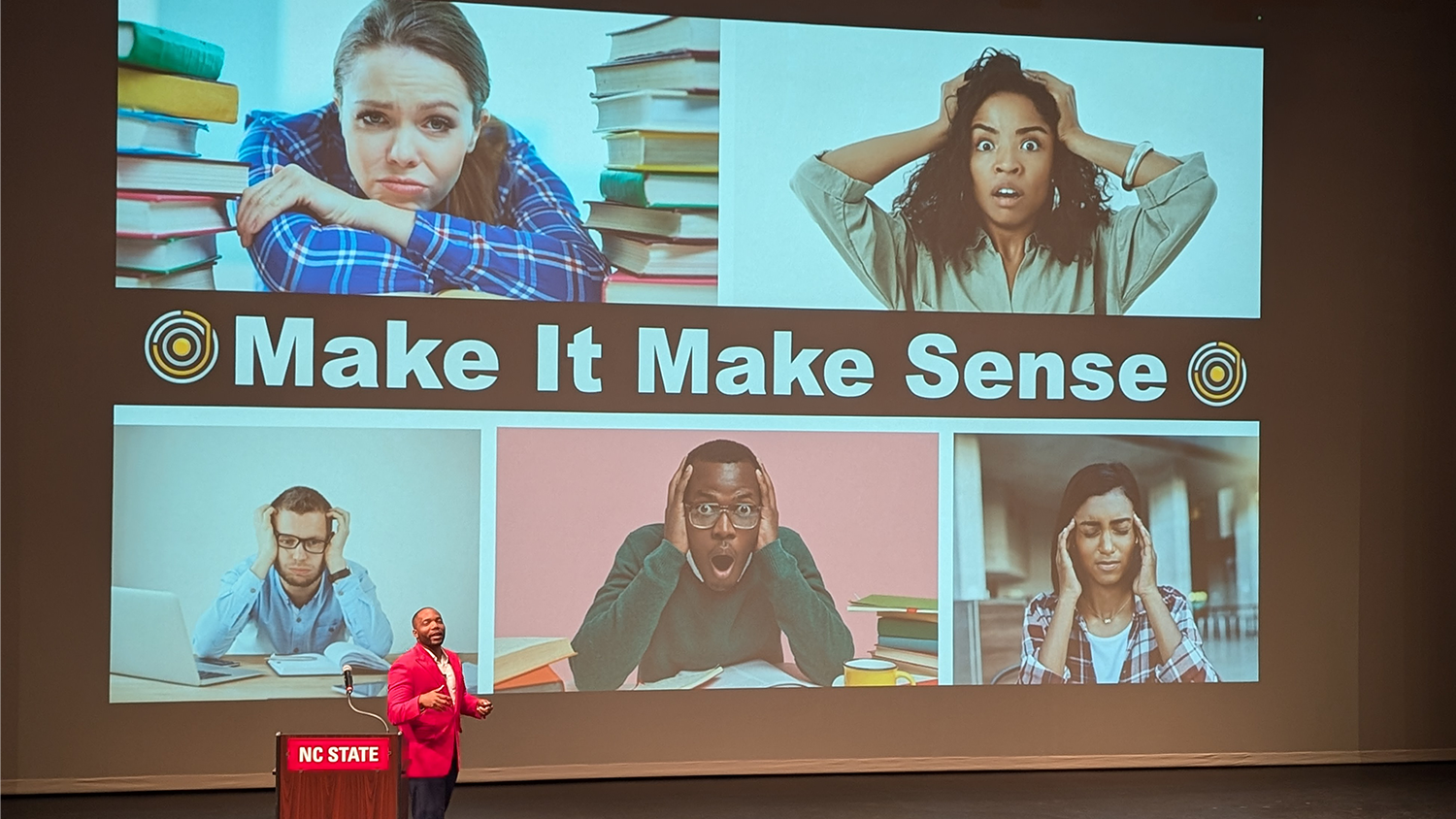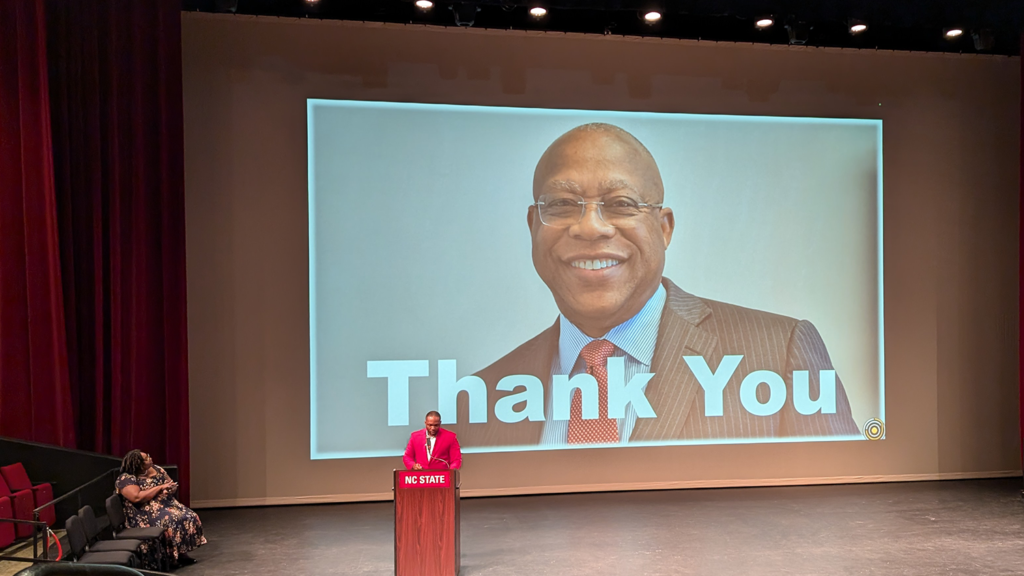James O’Neal ’06 Shares Tips to Help Math Teachers to ‘Make it Make Sense’ During 8th Annual Math Summit at NC State

When James O’Neal ’06 was a student in NC State’s College of Education, he was asked a question that forever changed the way he thought about doing mathematics.
At the start of a class, former Professor Emeritus Lee Stiff asked O’Neal and the rest of the students in his class why a2 + b2 = c2. Although everyone in the class knew that formula was the Pythagorean Theorem and how to apply it, nobody was able to explain the fundamentals of why the formula works the way it does.
“We couldn’t tell him why a2 + b2 = c2 because nobody had ever shown us,” O’Neal said. “I talk about Dr. Stiff all over because this moment changed my life forever. It’s the first time where I realized that I should know why, and I want to know why, and I want to stop doing procedure after procedure without knowing why this stuff works.”

O’Neal, now the National Board Certified Founder and CEO of Mastery For All, LLC, shared this story as the keynote speaker at the eighth annual Math Summit held on Aug. 6 at NC State. The event, which is sponsored by the NC State College of Education and the Triangle Math Alliance – a regional consortium of the Chapel Hill-Carrboro, Durham, Johnston, Orange and Wake County public schools – and funded by the Goodnight Educational Foundation, is designed to help practicing teachers learn more about best practices for mathematics teaching and learning.
During his speech, entitled “Make it Make Sense,” O’Neal shared the following tips for math teachers to help their students move beyond memorizing procedures to truly understand the “why” behind the math problems they’re solving.
“Nix the Tricks”
While mnemonics and other tricks can be useful for students to remember the steps they need to take to get to the correct solution, teaching tricks without first helping students reach a point of sensemaking will only confuse them, O’Neal said.
For example, teaching students the “keep-change-flip” strategy for dividing fractions without first allowing them to discover the pattern behind the formula and develop an understanding of why those steps work every time, he said, means they won’t develop the conceptual foundations needed to problem solve or know the correct context in which to apply the formula.
“I’m not against tricks. I’m against tricks when they’re not grounded in sensemaking. We can use rhythm; we can use rhyme; we can use songs to learn and make sense of our world … but tricks trick kids when they don’t know when or why to apply,” O’Neal said. “The beauty of math is that, when it makes sense, there is a road you go down and you see [the pattern] over and over again, and you know why, and you know when to do it.”
Use Visuals to Aid Sensemaking
When students learn math in early grades, they are often taught using manipulatives or visual aids to help them understand the conceptual foundations of the mathematical ideas. In secondary grades; however, these visuals often go away.
Allowing students to use or draw diagrams, or even count on their fingers if they need to, O’Neal said, can help them to build a conceptual understanding that will eventually allow them to understand a quicker and more efficient way to solve the problem.
“Let kids use whatever they want to use, like letting them use their fingers. Stop shaming kids for using the things that they need to use to make sense of the math,” he said. “If we skip things like [visual aids], sensemaking is not going to happen for our kids.”
Extend the Classroom Culture to the Home
As a classroom teacher, O’Neal noticed that parents who attended school events, like Open House, had no problem sharing with him that they were bad at math. Often, he said, this is because parents were taught by rote memorization rather than through a method that builds conceptual understanding or incorporates student discussion.
To help drive home the narrative that everybody is capable of learning math, O’Neal encourages his students to take what they’ve learned in class and teach a family member, neighbor or friend what they’ve learned.
“Students who can articulate their thinking do better in making sense of mathematics and retaining what has been taught. As facilitators, we should make sure that students are given space to make connections and articulate those connections,” he said.
- Categories:


